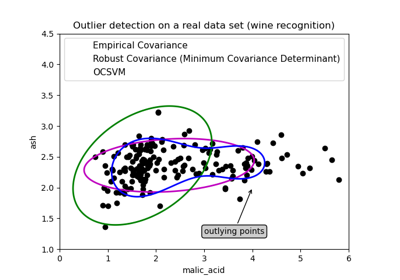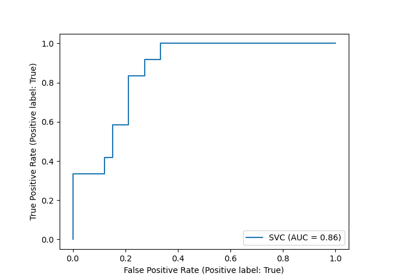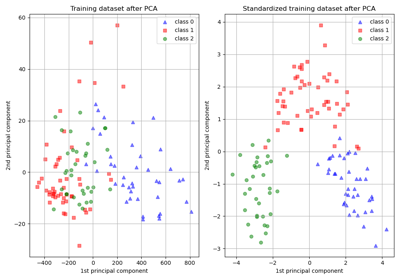sklearn.datasets.load_wine¶
- sklearn.datasets.load_wine(*, return_X_y=False, as_frame=False)[source]¶
Load and return the wine dataset (classification).
New in version 0.18.
The wine dataset is a classic and very easy multi-class classification dataset.
Classes
3
Samples per class
[59,71,48]
Samples total
178
Dimensionality
13
Features
real, positive
Read more in the User Guide.
- Parameters
- return_X_ybool, default=False
If True, returns
(data, target)instead of a Bunch object. See below for more information about thedataandtargetobject.- as_framebool, default=False
If True, the data is a pandas DataFrame including columns with appropriate dtypes (numeric). The target is a pandas DataFrame or Series depending on the number of target columns. If
return_X_yis True, then (data,target) will be pandas DataFrames or Series as described below.New in version 0.23.
- Returns
- data
Bunch Dictionary-like object, with the following attributes.
- data{ndarray, dataframe} of shape (178, 13)
The data matrix. If
as_frame=True,datawill be a pandas DataFrame.- target: {ndarray, Series} of shape (178,)
The classification target. If
as_frame=True,targetwill be a pandas Series.- feature_names: list
The names of the dataset columns.
- target_names: list
The names of target classes.
- frame: DataFrame of shape (178, 14)
Only present when
as_frame=True. DataFrame withdataandtarget.New in version 0.23.
- DESCR: str
The full description of the dataset.
- (data, target)tuple if
return_X_yis True - The copy of UCI ML Wine Data Set dataset is downloaded and modified to fit
- standard format from:
- https://archive.ics.uci.edu/ml/machine-learning-databases/wine/wine.data
- data
Examples
Let’s say you are interested in the samples 10, 80, and 140, and want to know their class name.
>>> from sklearn.datasets import load_wine >>> data = load_wine() >>> data.target[[10, 80, 140]] array([0, 1, 2]) >>> list(data.target_names) ['class_0', 'class_1', 'class_2']



